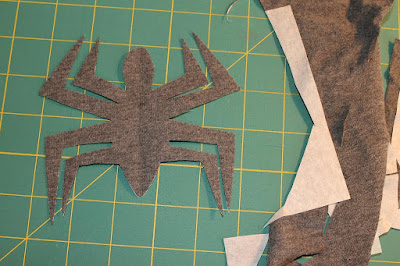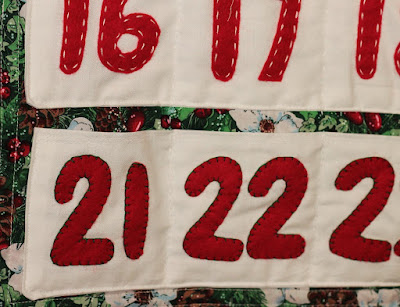Ever since I started sewing, my pack-rat tendencies have gotten a little out of hand. I have stacks and stacks of old clothes that I can't bear to give away--it's free fabric after all, and maybe I could use it one day (I know, big maybe...)
I found a tutorial at It's Always Autumn on making little man pj's from a t-shirt, and I knew I had to make some cute jammies for my little man. Just making grey pants and a black shirt seemed awfully plain. I added a grey spider to the shirt, and suddenly, they're awesome Spider-Man pajamas!
 |
| My adorable model, I think he's singing "Itsy Bitsy Spider" |
This is part 1, where I'll cover how I made the raglan shirt. Check out part 2 for the pants tutorial.
What you need:
- XL men's shirt (plenty of material for size 2T pj's)
- pair of pajamas to use as pattern pieces
- matching thread
- ball-point needle for sewing knits
1. Lay out your pattern piece at the center of the t-shirt, lining up the bottom hems and folding in your sleeves. Cut about 1/2 inch away from the edge (to allow for seam allowances). If you want to make set-in sleeves, check out the original tutorial.
2. Cut sleeves from the sides of the shirt. Again, use the existing hem at the bottom of the t-shirt and add 1/2" on all sides for seam allowances.
3. Cut out a spider (I did this free-hand, but I'm sure you could find a Spider-Man printable for a template.) I used extra material from the sleeve of my t-shirt. **But, you might want to wait until after you cut out your pants to cut out the applique, since you'll be using the sleeves to make the pant legs.
I used fusible web to attach the spider to the front of the shirt. Then I sewed around with a straight stitch about 1/8" from the edge to securely attach it, leaving the edges raw.
4. Place shirt pieces right sides together and sew the two sides, up to the bottom of the diagonal. Since I don't have a serger, I had to decide whether to use a straight stitch or a zig-zag stitch. I ended up sewing 1/2" from the edge with a straight stitch, then 1/4" from the edge with a zig-zag because I've read about popped seams when working with knits.
5. Place sleeve pieces right sides together and sew along both sides, leaving the diagonal open.
6. Turn the sleeves right-side out. Place one inside the shirt, with right sides together. Line up the seam at the bottom. Starting at the back neck point, sew along one side of the diagonal, across the seam, then along the other side of the diagonal.
Repeat for the 2nd sleeve.
7. Turn the shirt right-side out. Cut the collar off your XL t-shirt. Measure the collar of your pattern pj's and add about 1", then cut your collar piece. Tuck in one end 1/4" and tuck the other end inside. You should now have a circular collar with no raw edges.
Center the collar join in the back. Pin the collar around the top of the shirt, aligning the raw edges. Sew together with a zig-zag stitch.
Fold down the collar, then sew 1/8" under the collar with a straight stitch. Make sure to stretch as you sew so the stitching won't be too tight to stretch over a toddler's head.
And that's it, you've finished the top and are ready to move on to making the pants!
-Lily




















